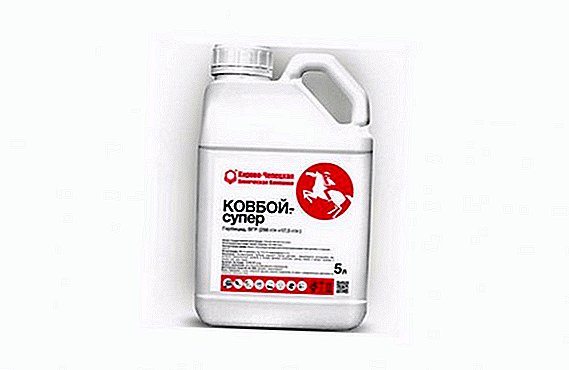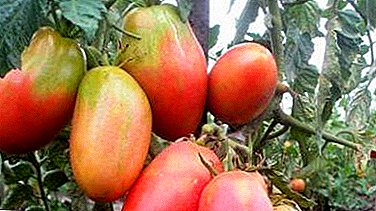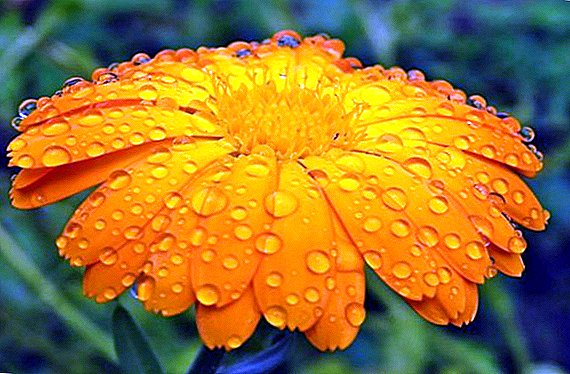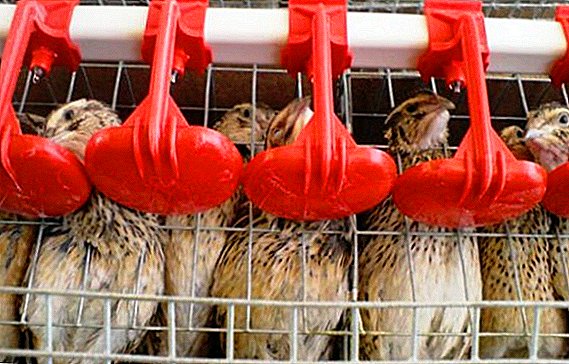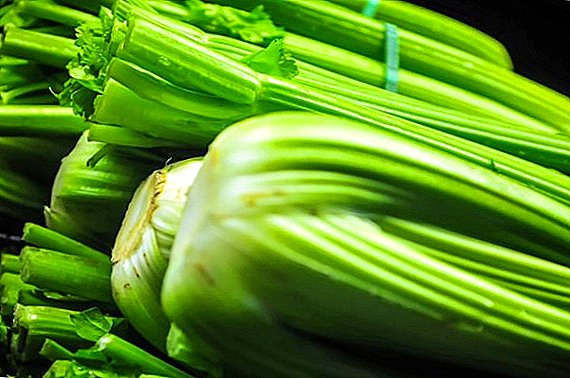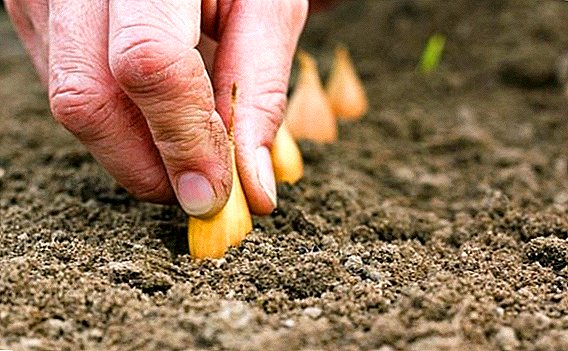 Onions - a perennial herb. The most popular type is onion. The cultivation has led to the fact that now it is basically a biennial plant. Onions are widely used for food, and for the crop to be year-round, it must be planted for the winter. Since the plants have to go through a lot of cold days, this planting has its own characteristics.
Onions - a perennial herb. The most popular type is onion. The cultivation has led to the fact that now it is basically a biennial plant. Onions are widely used for food, and for the crop to be year-round, it must be planted for the winter. Since the plants have to go through a lot of cold days, this planting has its own characteristics.
What kind of onions can be planted for the winter
For winter landing only frost resistant varieties are suitable. They easily tolerate the winter and quickly go to growth with the arrival of spring.
Popular winter varieties include:
- "Ellan" (sweet, shoots withstand brief frosts up to -2 ° C).
- "Strigunovsky" (if grown from seedlings, it can form two bulbs in the nest; the taste is spicy).
- "Ruby" (red variety, ripens 110-115 days, grown in the southern regions, has a well-developed root system).
- "Stuttgart Riesen" (German variety of yellow shades, flattened, ripening from seeds for 3.5 months, from the seed - 65-70 days).
- "Chalcedony" (very large variety, ripens 110 days).
- "Buran" (a universal variety bred by Ukrainian breeders, ripens 68-83 days, resistant to fungal and bacterial diseases, spicy in taste, lies well).
- Danilovsky-301 (red variety, ripens 100-110 days, tastes semi-sharp).
- Myachkovsky-300 (early, ripening 65-75 days, high-yielding).
- "Mouzon" (ripens 90-110 days, the taste is semi-sharp, round, white variety, stored for 2 months).
- "Lugansk" (one-year-old, ripens 130 days, the bulb weighs 71-146 g, has a golden color).
- "Tamara F1" (medium early, ripening 105-108 days, high-yielding, suitable for growth in a sharply continental climate, golden brown).
- "Black Prince" (ripens 100-105 days, semi-sharp, universal variety, red).
- "Panther F1" (ripens 130-135 days, long stored, gives a good harvest, round shape and bronze-brown color, Japanese variety).
- "Radar" (ripens 250-260 days, tolerates frost without snow to -15 ° C, and with snow to -23 ° C, golden brown).
- "Siberian" (ripens 90-100 days, grows well on the feather, is stored for about a year, rarely shoots arrows).














Important! Usually golden varieties of onions are sharp, and red - sweet.
When to plant onions in autumn
For a culture to survive the cold, it must be planted under certain weather conditions. For each region, these conditions correspond to a specific time of year. Described in more detail below.
Calendar dates
Winter onion planting is divided into three periods:
- Early. Produced in August-September. Produced after harvest. During this period of time, only the most frost-resistant varieties can be planted, since the plant has time to put on some feathers and they must survive the winter.
- Average: end of September - October. The most common. During this period, most winter varieties are sown.
- Late: the first of November, before the soil freezes. A small seedling is planted. Seeds can be planted in frozen ground.
Weather
Acceptable air temperature for landing: in the daytime 0-5 ° С, at night - up to -3 ° С. Soil temperature 3-4 ° C. 
Features of the region
Onions are grown everywhere, so that before planting you need to take into account the local climate and take appropriate measures.
Ukraine
The country has a moderate continental climate. It is characterized by the onset of the temperature described above in late October - early November, with a slight correction to the regions.
It is not advised to plant onions early, as it will have time to take root and will actively grow in warm weather. Then the probability of successful wintering of the culture is very low.
With the arrival of permanent frosts, beds are covered with sawdust and branches. When the snow falls, it is advisable to well cover them with crops. The most suitable varieties:
- "Ellan";
- "Strigunovsky";
- "Buran";
- "Stuttgart Riesen";
- Danilovsky-301;
- "Chalcedony".
Did you know? The name of the most common type of onion - onion - appeared because of its external resemblance to the turnip.
Belarus and Moscow region
These regions also lie in a temperate continental climate. Therefore, the onion disembarkation period approximately coincides with the disembarkation period in Ukraine. The only thing that distinguishes the regions is the more severe frosts in the north-eastern part of Belarus and in the suburbs. This requires more careful harboring. And with a large thickness of snow frost is not terrible.
Ural
There is already a sharp continental climate with very cold winters. The landing moves in September-October. Choose for planting recommend local varieties, bred specifically for the harsh climate. Warming beds for the winter should be good. 
Siberia
The region also falls into a sharply continental climate, but with even lower temperatures and a shorter warm period. Here planted onions for the winter is extremely unprofitable. It is very difficult to guess the weather. However, if the desire to plant onions is still there, it is necessary to strictly follow the rule: the daytime temperature remains at 5 ° C for several days - you can plant it. It is also necessary to plant the seedling at the optimum depth, so that the culture does not freeze and does not rise prematurely.
Did you know? The Latin name for the plant genus Allium (onion) was given by Carl Linnaeus and comes from a similar Latin word, which was called garlic. Presumably associated with the Celtic "all", which means "burning".
Site selection for planting
For winter onions, it is necessary to arrange the bed correctly so that the plant can survive the winter.
Placing beds
Choose a piece of land in a sunny and dry place. It should not stagnate moisture. If this happens, it is necessary to form an elevation. Position the beds on the southern or south-western part of the plot, preferably on a slope, so that it protects the seedlings from the wind.
The best soil is drained humus-sandy or humus-loamy. Onions will grow well on silt river sediments. 
Crop rotation
Good predecessors:
- cereals, except oats;
- corn;
- beet;
- mustard;
- rape;
- phacelia;
- peas;
- beans;
- Vika;
- tomatoes;
- salad;
- cucumbers;
- cabbage.
It is undesirable to plant after:
- bean
- potatoes,
- parsley
- celery
- alfalfa;
- red clover.
 It is possible to plant a second crop after: rapeseed, winter barley, beans, peas, radish, carrots and table beets, but only if these crops were harvested before the third decade of July.
It is possible to plant a second crop after: rapeseed, winter barley, beans, peas, radish, carrots and table beets, but only if these crops were harvested before the third decade of July.
Important! After onions and garlic, onions can be planted in the same place only four years later.
Pre-soil preparation
Dig up the soil with humus in advance. Fertilizer is added at the rate of 5-6 kg per square meter. Mineral fertilizers are added to it (10-15 g of potassium salt and 20-25 g of superphosphate per square meter). In the absence of mineral fertilizers, ecofosc will be suitable with the same calculation. Before lowering the seeds and seedlings into the ground, it is necessary to scatter ash over the bed with the calculation of 10 g per square meter.
Read also about growing onions in the Chinese way and on the windowsill.
Preparation of planting material
Seedlings should be prepared 10 days before disembarkation.
First stage - onion sorting. There is an oversized (very small onions, less than a centimeter in diameter), the first category (up to 1.5 cm in diameter), the second category (up to 3 cm in diameter), the third category (more than 3 cm in diameter). Ovusuzhka not suitable for winter seva. It is too small and during the frost just dries in the ground. It is better to leave it for spring sowing or throw it away. Also in the spring plant the third category. The first and second is ideal for winter sowing. They are called sevke.
Second phase - disinfection. Spend it a week before the landing date. Sevok soaked in a light solution of potassium permanganate for six hours.  You can soak in saline solution (1 tablespoon. Salt per 1 liter of water). In it, the onions are held for three hours, after which they are placed in a solution of potassium permanganate at the same time. Then the seedling is laid out for drying in the attic. From time to time it is turned over.
You can soak in saline solution (1 tablespoon. Salt per 1 liter of water). In it, the onions are held for three hours, after which they are placed in a solution of potassium permanganate at the same time. Then the seedling is laid out for drying in the attic. From time to time it is turned over.
Learn more about the features of onion processing in salt solutions and potassium permanganate.
Before planting, you need to view the bulbs and select the spoiled.
Landing process
- We form a bulk bed of any length and about a meter wide. With this width, it is more convenient to care for crops.
- Loosen the soil with a rake, get rid of large lumps of earth. We remove the weed.
- In the prepared area, the grooves break through with an interval of 18–20 cm between them and a depth of about 2.5 cm. We can make holes in a checkerboard pattern. If sowing of seeds is supposed, they are sown densely.
- In the furrow fit seedling with a gap of 5-7 cm between the bulbs. Sprinkle with a layer of ground 1.5-2 cm thick. Condense. If the frost is around the corner, we insulate a bed of mulch.
- Water 10 days after sowing.
How to protect from winter frosts
With the arrival of constant frosts we harbor beds of dry foliage or spruce leaves. More spruce branches need to be applied when snow falls. This will help keep him on the bed and protect the crop from frost.
It is better not to use straw and peat, they freeze to the ground and in the spring they are difficult to clean. Also, do not recommend covering the seedling with oilcloth and special material. With the arrival of spring, an overabundance of moisture forms under the oilcloth, and the covering material will freeze through and will not normally pass oxygen. 
Spring work
As soon as the snow melts and the earth warms up a bit, we begin to remove the mulch. The bed cleared of "insulation" is filled with ash (10 g per square meter) and loose soil. Water as the soil dries (10 liters per square meter). After watering and rain necessarily loosened the earth, remove the weed.
See also: a list of the most common weeds, ways of weed control, folk remedies for weeds.
When four leaflets germinate, fertilize again and thin the seedlings, if necessary. We make mineral fertilizers, as described in the section on soil preparation.
Important! To protect the onions from the flies, plant a calendula around the perimeter of the garden bed.
In general, planting onions for the winter is a rather painstaking job. But this culture, which is familiar to us, does not require too complicated care and is quite capable of enduring strong cold. So if all recommendations are followed, the harvest will be good.


